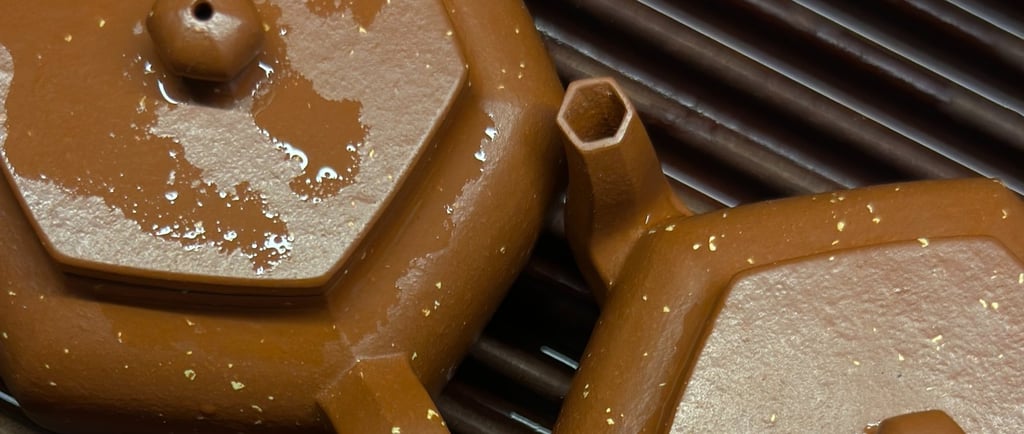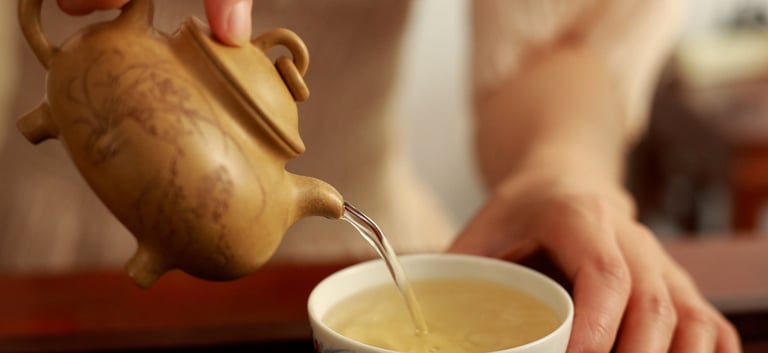How to Find the Best Teapot for Loose Tea and Enjoy the Perfect Brew Every Time
Find the best teapot for loose tea and perfect your brew! Discover top materials like Yixing clay, tips for size, and must-have features like strainers. Plus, learn foolproof steps for steeping loose leaf tea every time. Simplify tea-making and sip happily!
TEA WARES GUIDE


Alright, let’s cut to the chase. If you’re a fan of loose leaf tea, you know there’s one thing that can make or break the experience: the teapot. But how do you find the best one? Is there really a difference between a good teapot and a great one? And, most importantly, how can you make sure you're brewing your tea perfectly every time?
Don't worry, I’ve got your back. Here’s the lowdown on how to find the best teapot for loose tea. I’ll break it down so you can enjoy that perfect brew with minimal fuss.
Why Does the Teapot Matter for Loose Tea?
You might be wondering, “Isn’t any teapot good enough?” Well, sort of. But here's the thing—brewing loose leaf tea is different from using tea bags. You need a pot that’s going to let the leaves unfurl, circulate, and release all that flavour. A cheap teapot can ruin your whole tea ritual. Trust me, I’ve been there.
The Right Teapot Makes All the Difference
When it comes to brewing loose leaf tea, the teapot is your best friend. Here’s why:
Proper Brewing Temperature: A good teapot keeps the temperature consistent, which is crucial for steeping your tea just right.
Room for Leaves to Expand: Loose tea needs space to spread out and release its flavours.
Heat Retention: Some teapots are better at holding heat, keeping your tea at the perfect temperature. For example, Yixing teapots, made from clay, are fantastic for maintaining heat and even enhancing the flavour of tea over time.


What to Look for in the Best Teapot for Loose Tea
Finding the right teapot might feel a little overwhelming at first, but trust me, it’s all about these key features. Let’s break it down.
1. Material Matters
The material of your teapot plays a huge role in how your tea turns out. Here are your main options:
Porcelain: Classic, keeps tea warm, easy to clean. But it can chip.
Glass: Great for watching the tea brew, but it doesn’t retain heat as well.
Cast Iron: Super sturdy and retains heat like a champ, but can be heavy.
Clay: Traditional and great for flavour, but needs a bit more care.
2. Size and Capacity
When choosing a teapot, think about how much tea you usually make. You don’t want one that's too small or too big. Aim for a size that suits your usual tea-drinking habits.
Here’s a rough guide:
1-2 cups: Perfect for a single brew or a small gathering.
3-4 cups: Ideal for a few friends or multiple refills.
5+ cups: If you love a big pot for a larger crowd.
3. A Good Strainer
You’ll want a teapot with a built-in strainer or infuser. This helps keep the leaves out of your cup and ensures you’re getting a smooth brew. Make sure the holes are small enough to keep the leaves from escaping.
4. Pouring Spout
A good teapot should have a smooth, steady pour. You don’t want tea spilling all over the place when you’re serving. Look for a teapot with a well-designed spout to ensure a clean pour.
5. Handle Comfort
This might seem like a minor detail, but trust me, it matters. The handle should feel comfortable and secure when you’re pouring. If it’s too small or awkward, you’re going to be dealing with some spills.
How to Brew Perfect Loose Tea Every Time
Okay, now that you’ve got the right teapot, let’s talk about how to brew that perfect cup of tea. Because even the best teapot won’t do much good if you’re brewing wrong. Here’s a simple guide to getting it right:
1. Measure the Tea
The standard rule of thumb is about one teaspoon of loose leaf tea per cup of water. Adjust this based on your personal taste—some like it stronger, some like it milder.
2. Use Fresh Water
If you’re using old, stale water, your tea will taste off. Always start with fresh, cold water for the best flavour.
3. Temperature is Key
Different teas need different temperatures:
Green tea: 70-80°C (160-175°F)
Black tea: 90-100°C (194-212°F)
Herbal tea: 95-100°C (203-212°F)
If your teapot doesn’t have a temperature gauge, just let the water boil and then let it cool for a minute or two before pouring it over your leaves.


4. Steep Time
Don’t overdo it! Here’s a quick guide:
Green tea: 2-3 minutes
Black tea: 3-5 minutes
Herbal tea: 5-7 minutes
If you steep for too long, the tea might turn bitter. Experiment with timing to find your perfect brew.
5. Serve and Enjoy
Once your tea has steeped, pour it into your favourite cup, sit back, and enjoy the fruits of your labour. It’s as simple as that.
Final Thoughts
Choosing the best teapot for loose tea is all about finding the one that suits your style and brewing preferences. Once you’ve got the right teapot and brew method, you’ll be enjoying that perfect cup of tea every time.
Remember: it’s not just about the teapot; it’s about the whole experience. So, find a teapot that feels right, get your brewing technique down, and enjoy the process. Happy brewing!
FAQs
What’s the best teapot material for loose tea?
It depends on your needs, but porcelain and cast iron are two of the best options. Porcelain is great for heat retention and ease of cleaning, while cast iron keeps the tea warm for longer.
How do I know if a teapot is the right size?
Think about how much tea you usually drink at once. A 1-2 cup teapot is perfect for a quick solo brew, while a 3-4 cup teapot is better for sharing.
Can I use a regular teapot for loose leaf tea?
You can, but if you choose a teapot that combines practicality with artistry, like Yixing teapot from TeapotArtisan, you’ll discover a whole new world of tea brewing.
Why is my tea too bitter?
It’s probably because you’ve over-steeped it or used water that’s too hot for the type of tea you’re brewing. Stick to the right temperature and steeping times for each tea variety.
